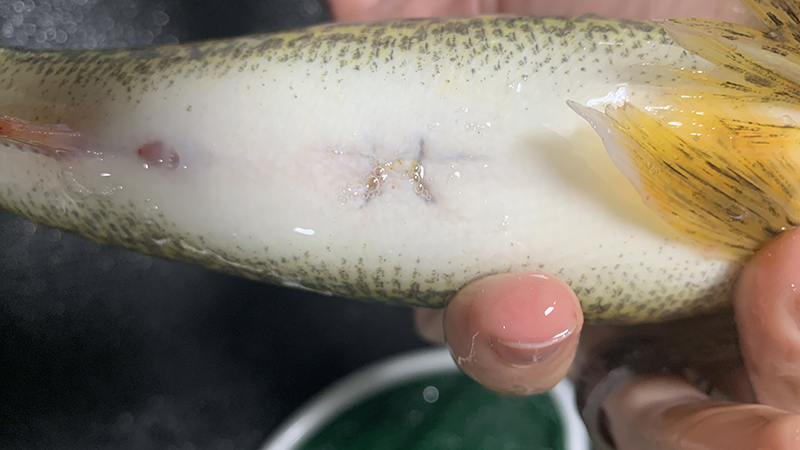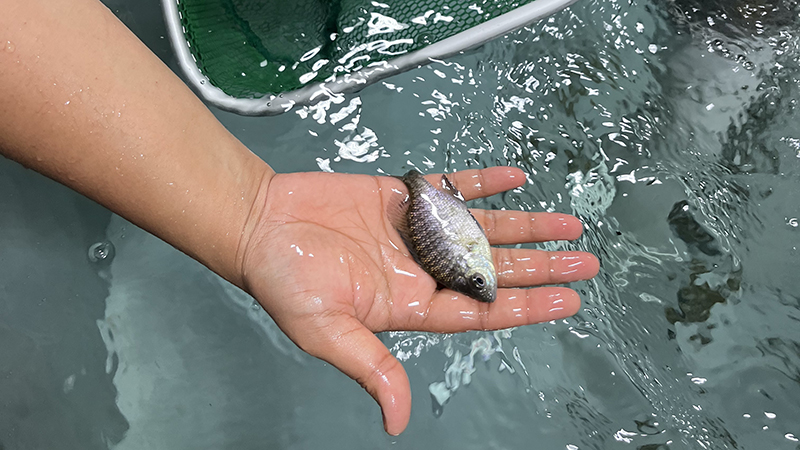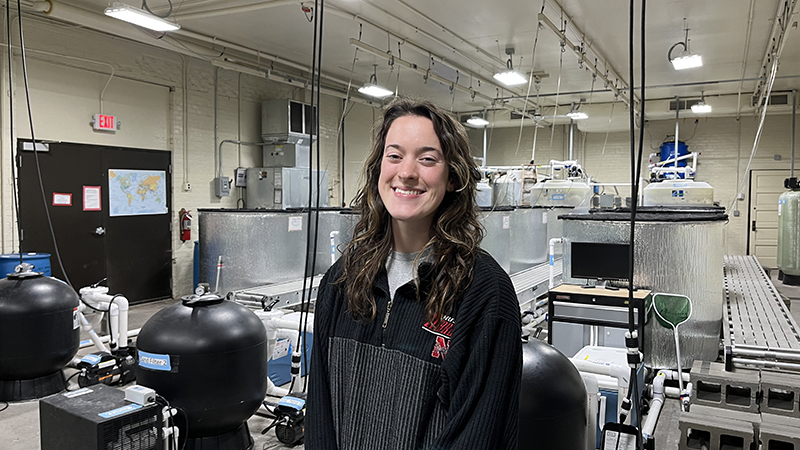Current Research
Gut Microbiome Manipulation Study in Fish
Israt Jahan's research investigates how gut microbiome could prepare the host for better acclimation when stocking in different habitat. The pilot experiments will be conducted in the fish lab before implementing them in the natural habitat in the Missouri River and its tributaries. Since the gut microbiome in fish varies including habitat and species, ample background study is needed before field implication. In 2023, we will study how bacterial dysbiosis occurs after transferring fish from natural habitat to hatchery environment and which group of microbes fish will need for better survival rate in the wild. Our goal is to propose sustainable ways to conserve native fish species in their natural habitat manipulating related gut microbiome.
Contact: ijahan2@huskers.unl.edu
Yellow Perch Captive Breeding for Conservation Education
A partnership with Nebraska Game and Parks Commission’s Education Division and SNR ichthyology students to investigate the feasibility of operating a yellow perch breeding program. NGPC currently offers a Trout in the Classroom curriculum program to Nebraska schools that allows students to hatch and raise trout while learning about aquatic ecosystems, life cycles, water quality and the scientific process. The education team is interested in substituting a warm-water, native species and partnering with UNL to supply eggs to classrooms. In 2023, ichthyology students will investigate the influence of water temperature, feeding rates, and fish density on growth rates of yellow perch. In 2024, students will attempt to create lab conditions that will encourage yellow perch to spawn in captivity.
Contact: Lindsey Chizinski
Previous Research
Surgically Implanted Transmitter Retention in Walleye
An investigation of healing and retention rates of walleye after surgical implantation with acoustic telemetry transmitters in the body cavity. Results from this research will corroborate a field study investigating walleye movement in Lewis and Clark Reservoir by validating that fish with implants can survive and retain their transmitters after the stress of capture and surgery.
Contact: Will Radigan

Determining Lanthanum Chloride Toxicity in Bluegill
An investigation of the potential impacts of lanthanum on fish. Lanthanum is a rare earth metal applied to aquatic systems in the form of Lanthanum Chloride (LaCl3) to inhibit algae growth by binding to excess phosphorus in the water column. Researchers are investigating the potential impacts of lanthanum treatments on resident fish species by monitoring growth, behavior, and lanthanum accumulation in the liver and soft tissues of bluegill at variable concentrations of lanthanum chloride.
Contact: Steven Comfort | Callie McCright

